Factors that influence the cost of installing automatic doors
Automatic doors are increasingly favored in modern buildings for their convenience and aesthetics. However, installation cost is not fixed it depends on multiple variables. In this guide, Thuy Linh Long explains the key factors so you can plan an accurate budget and avoid surprises during procurement and commissioning.
1. Type of automatic door selected
Installation cost depends heavily on the door type you choose. Each type has different design features, construction, and technical requirements, which lead to varying investment levels. Below are the most common options and what drives their prices.
1.1 Automatic swing doors
This is typically the most affordable option thanks to simple design and easy installation. Swing doors suit small offices, homes, or medium-size spaces where traffic is moderate. Costs can rise if you add electronic locks, touchless triggers, or advanced safety sensors, but they remain budget-friendly overall.
1.2 Automatic sliding doors
Sliding doors are the most common in supermarkets, hospitals, and hotels. They require guided tracks, quality rollers, and a moderate-capacity motor sized to the leaf weight. Pricing is generally higher than swing doors but still reasonable given the wide applicability, clean aesthetics, and space savings in tight corridors.
1.3 Automatic folding (bi-fold) doors
Folding doors use a more complex leaf-folding mechanism, ideal for tight spaces that still need a wide opening. They cost more than sliding doors due to precise installation needs, additional hinges and linkages, and higher part counts. When configured correctly, they deliver excellent flow without enlarging the rough opening.
1.4 Curved sliding and revolving doors
These are the most expensive because of unique geometry and complex technical requirements. Curved sliding systems are common in hotels and convention centers, while revolving doors create a luxurious focal point and improve climate separation. Costs include high-capacity motors, custom-curved rails or drums, and specialized sensors and controls.
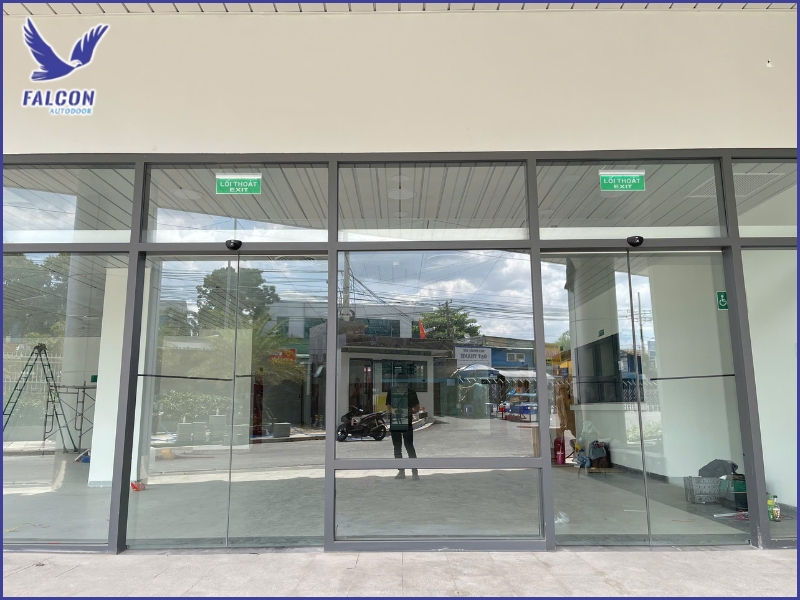
2. Door size and leaf weight
One of the biggest cost drivers is the size and weight of the door leaf. Larger, heavier doors require higher-output motors, stronger tracks, and upgraded accessories, increasing total cost. Accurate measurements and load calculations prevent underspecifying equipment or overpaying for unnecessary capacity.
2.1 Impact on motor capacity
Heavier doors need higher-power motors to ensure stable operation, consistent speed, and safe braking. As motor capacity rises, so does price and installation time due to added wiring and control tuning. This is why thick tempered glass or steel doors are pricier than lighter, thinner glass leaves.
2.2 Effects on tracks and accessories
Large doors need rails, rollers, carriers, and controllers rated for greater loads and duty cycles. Higher-grade components keep motion smooth and quiet, reduce vibration, and extend service life but they add to overall cost. Quality hardware pays off in durability and fewer callouts.
2.3 Cost by door area
Prices are often calculated by door area or leaf weight plus selected finishes. Wider and taller doors simply cost more across materials, glazing, and framing. For large projects such as malls or office towers, the door budget will exceed that of homes or small offices and may require phased purchasing.
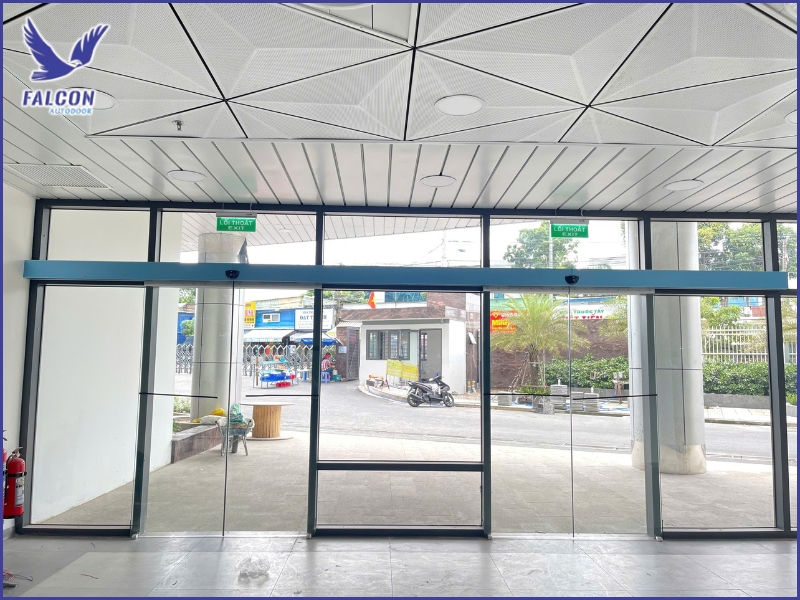
3. Materials and accessories included with the door
Leaf materials and accessory packages are major determinants of installation cost. Premium materials with matched accessories deliver better durability and aesthetics, but they raise the investment compared with basic options. Selecting a coherent, single-vendor package also simplifies future service.
3.1 Door leaf materials
Tempered or laminated glass is popular for strength and appearance, but it costs more than standard glass. Steel or stainless steel offers high load resistance and security at a higher price due to mass and finishing. Aluminum or engineered wood options are more budget friendly while still offering clean looks.
3.2 Motor and control system
The motor is the most expensive component and accounts for a large share of the price. Higher-capacity motors cost more and may require upgraded power supplies. The central controller, motion and safety sensors, and electronic locks add to installation cost; modern features improve experience, hygiene, and security but raise the budget.
3.3 Supporting accessories
Tracks, rollers, gaskets, safety edges, push buttons, key switches, and backup power units all affect the final price. Choosing genuine, matched accessories improves stability and lifespan, though the cost is higher than off-brand or mixed parts. The payoff is quieter operation and fewer compatibility issues.
3.4 Access control and integrations
Integrating card readers, keypads, fingerprints, intercoms, or building management systems increases both hardware and commissioning costs. Cabling, network interfaces, and software licensing should be budgeted upfront. Well-planned integration enhances security and auditability while avoiding costly retrofits later.
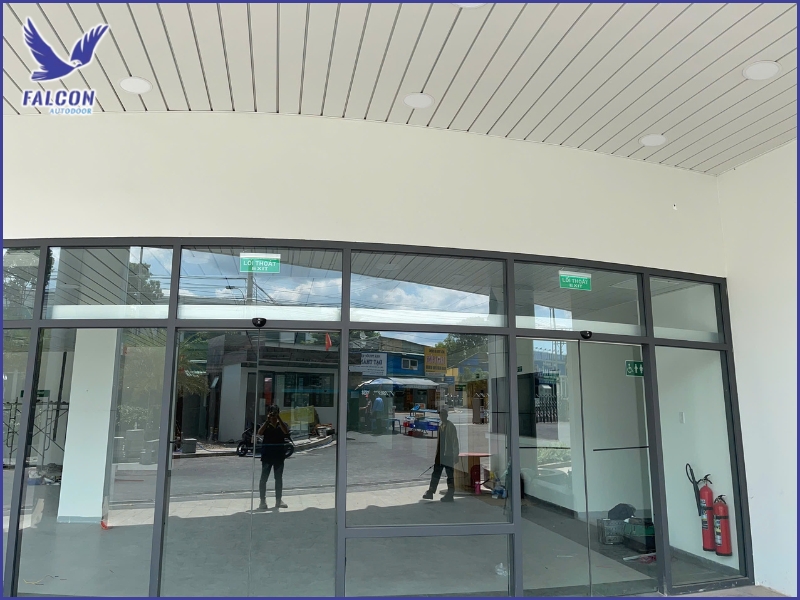
4. Supplier and installation services
Overall cost also reflects the supplier and the quality of services provided. Some vendors offer low entry prices but limited warranty, while reputable partners may charge more upfront yet deliver safer, longer-lasting results. Consider total value, not just the headline number.
4.1 Product origin and quality
Authorized suppliers tend to price slightly higher than unknown sources. In return, you get assured quality, matched accessories, compliance documentation, and formal warranty coverage often saving future repair costs. Traceable origin also streamlines insurance and inspections.
4.2 Installation expertise and techniques
A professional team installs to standard and minimizes issues in daily operation. Proper framing, alignment, sensor positioning, and commissioning reduce noise, binding, and premature wear. Poor installation leads to track jams, controller faults, and rising maintenance costs.
4.3 Warranty and maintenance policy
Trusted providers include clear warranty terms and scheduled maintenance options tailored to usage. This keeps the door stable, reduces risk, and optimizes long-term cost. Choosing the cheapest offer without proper warranty can increase your real cost over time.
4.4 Compliance, permits, and code requirements
Certain projects require compliance with fire, accessibility, or energy codes, and these may affect hardware selection and documentation effort. Permit fees and inspection visits add time and cost to the schedule. Engaging a supplier who understands local regulations avoids delays and rework.
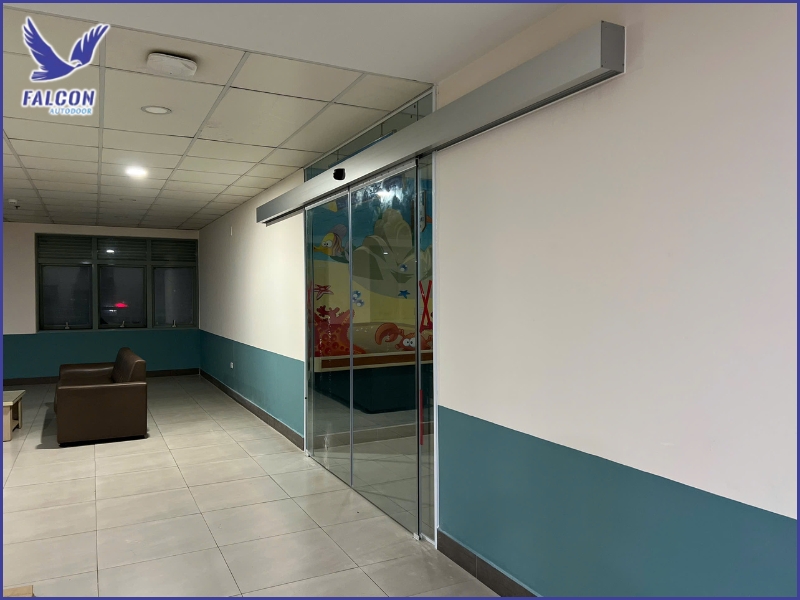
5. Tips to optimize automatic door installation cost
You can significantly optimize costs by making the right choices from the beginning. Defining needs, balancing CAPEX and OPEX, and prioritizing genuine products will save money while protecting quality. Clear scopes and realistic timelines keep projects on budget.
5.1 Define real needs
Not every project requires a high-priced door type. For homes or small offices, a swing door or standard sliding system is often sufficient. Clear requirements help you avoid paying for unnecessary features and keep maintenance manageable.
5.2 Balance investment and maintenance
Some doors are inexpensive to install but costly to maintain, and vice versa. Investing in higher-quality systems can reduce service expenses and downtime over time. Evaluate total cost of ownership across five to ten years, not just purchase price.
5.3 Prioritize genuine products with matched accessories
Genuine systems with fully matched accessories operate more reliably and fail less often. Although the upfront cost is higher, you save on repairs, compatibility headaches, and replacements in the long run. Consistency also speeds up future servicing.
5.4 Compare quotations from multiple vendors
Request quotes from at least two to three suppliers to understand the market and scope differences. Do not choose purely on the lowest price prioritize transparent proposals with clear bill of materials, warranty terms, and maintenance services. Ask for sample references and site photos of past work.
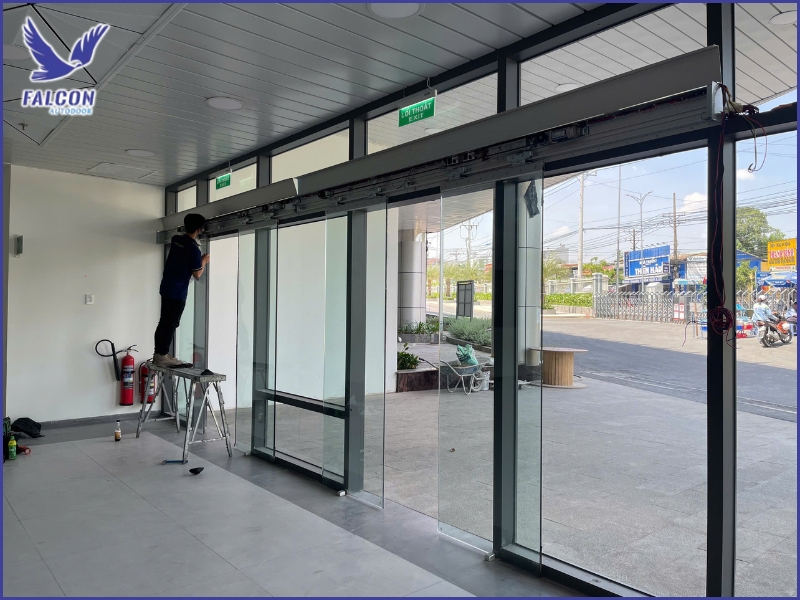
If you are seeking an automatic door solution that balances safety, aesthetics, and cost, contact Thuy Linh Long for a free consultation and a detailed quotation tailored to your project. We provide genuine Falcon products, standards-based installation, and responsive after-sales service to keep your entrance running smoothly for years.
THUY LINH LONG SERVICES TRADING COMPANY LIMITED
DISTRIBUTOR
Address: 243D Vuon Lai Street, Phu Tho Hoa Ward, Tan Phu District,
Ho Chi Minh City, Vietnam.
Tel: +84 28 22497999
E-mail: cuatudong24h@gmail.com
SUPPLIER
KUM YANG MATERIALS CO.,LTD
Address: 124-60, Myeongdong-ro, Hallim-myeon,
Gimhae-si, Gyeongsangnam-do, 50851, Korea.
Tel: 82-55-345-8380










